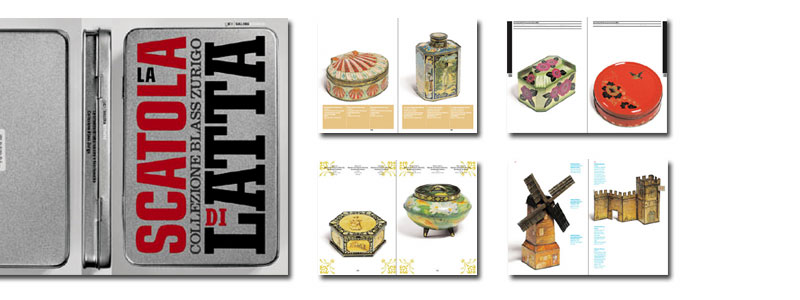







La scatola di latta - Tra
arte e funzionalità Winner of |
| The story of the tin as a collection item started
in the period following the war. Impressed by the quality and appeal of the English biscuit tins, throughout the 1950s and 60s J.M. Franklin collected hundreds of items, which became the subject of an exhibition at the Victoria&Albert Museum in London at the beginning of the 1970s. The tin has therefore entered the realm of museum exhibit in every sense, thanks to its singular combination of expert handiwork and industrial production, using a language of extremely varied images and shapes. In time the tin packaging has not only maintained its objective of container and preserver of products of various types, but has assumed more and more the role of visual communicator. The demands of the market, in fact, require that the tins be easily visible, attention grabbing with their colours and shapes (the tin is three-dimensional and offers an infinite variety of decorations), able to be a vehicle for and to reinforce the image of the contents manufacturer in such a way as to favour its purchase by the consumer. |
| And finally, it needs to be acknowledged that the
humble tin has taken on new meanings and new cultural significance. It is no longer considered just something useful, to be disposed of after use, but has risen to the rank of object of study of daily life, representing socio-cultural values.The catalogue groups together a large number of items according to precise stylistic and period criteria. The dating is not always reliable, given the difficulty in determining the exact year of manufacture, but it is nevertheless important to attribute a minimum chronological ordering, highlighting that this packaging is the only one of its type and representative of the particular moment in history in which it was created. The history of the tin certainly did not end in 1939, and the exhibition covers not only the fascinating period from 1870 to 1930, but extends through the period between 1950 and 2002. |